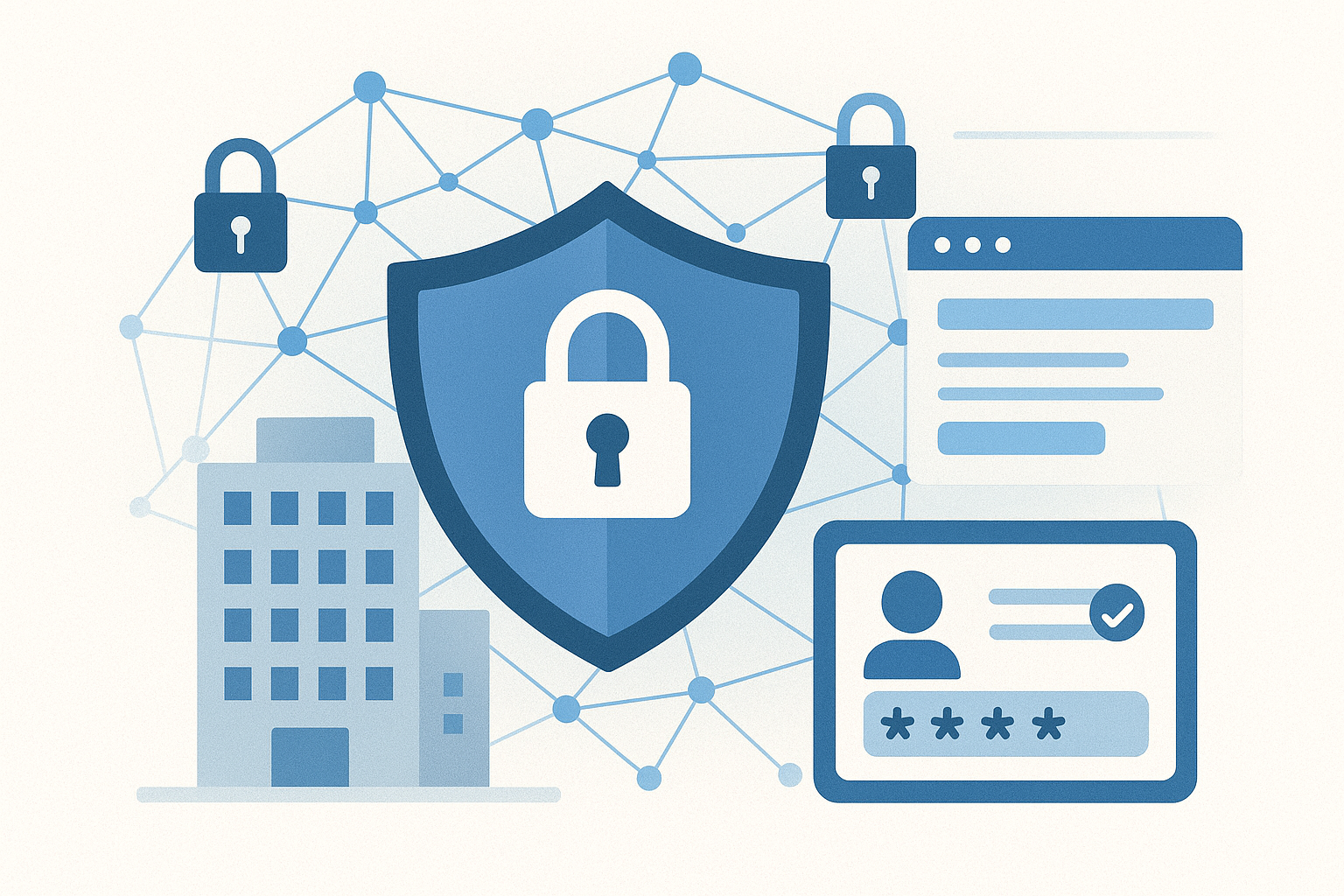
Introduction
The Zero Trust security model has revolutionized the way large enterprises protect their data and systems. As cyber threats become more sophisticated and hybrid work environments expand, the implicit trust in internal networks has become obsolete. The Zero Trust model is based on the principle of "never trust, always verify," meaning that no user or device can access resources without continuous authentication.
This approach is used by leading cybersecurity companies to ensure that only authorized users can access critical systems and data. In this article, we'll explore how Zero Trust helps strengthen the security of large organizations, its key benefits, and how you can implement this strategy in your own company to protect it from emerging threats.
Table of Contents
What is Zero Trust and how does it work?
Definition: Zero Trust is a cyber security approach that assumes that no user, device or system can be trusted, whether it is inside or outside the corporate network. Every request for access to systems must be authenticated and authorized.
Key principles of Zero Trust:
Never trust, always verify: Each access request should be treated as coming from an untrusted source, regardless of the user's location.
Continuous verification: Access is continuously verified instead of being a one-time authorization.
Minimum access required: Users are only given the minimum access necessary to perform their work, minimizing the risk of lateral movement in the event that an account is compromised.
Example: If an employee attempts to access a sensitive file from a location outside the corporate network, the Zero Trust system will verify their identity and context before granting access.
Benefits of implementing Zero Trust in large companies
Improved security: By not assuming that any part of the network is secure, Zero Trust drastically reduces the chances that internal or external attacks will succeed.
Granular control: Enables granular authentication and authorization, ensuring that each user or device only has access to what is necessary to perform their job, and nothing else.
Prevention against advanced threats: Zero Trust is especially effective in preventing advanced attacks such as lateral movement (when an attacker gains access to an account and moves around the network to gain more privileges).
Example: Google, one of the first companies to implement Zero Trust, has seen significant improvements in the protection of sensitive data and access control across its infrastructure.
How do large companies implement Zero Trust?
Identification and authentication: Implementing multi-factor authentication (MFA) is key to ensuring that users are who they say they are before granting them access.
Microsegmentation: It divides the network into small segments and applies strict access policies to each, ensuring that if an attacker gains access to one part of the network, he cannot easily move to other parts.
Continuous monitoring and analysis: User behavior monitoring and analysis systems help detect unusual activity, such as unauthorized access or attempts at lateral movement within the network.
Example: Companies such as Microsoft and IBM have implemented Zero Trust through identity and access management (IAM) solutions and next-generation firewalls that continuously validate users.
Challenges when implementing Zero Trust in your company
Implementation complexity: The transition to Zero Trust can be complex, especially in companies with traditional infrastructures or large numbers of devices.
Costs: Implementing Zero Trust requires significant investments in security technology, such as identity management solutions, advanced firewalls and continuous monitoring.
Resistance to change: Employees may have difficulty adapting to new forms of authentication and access restrictions, which can lead to resistance to change.
Example: Implementing Zero Trust in an enterprise with legacy systems may require infrastructure upgrades and a gradual process to avoid disruptions in operations.
Future Trends: The Future of Zero Trust
Integration with artificial intelligence (AI): The future of Zero Trust is intimately tied to artificial intelligence (AI), which will enable systems to perform predictive analytics and automatic adjustments to access policies in real time.
Expansion in hybrid and remote environments: As more enterprises adopt remote and hybrid work models, Zero Trust will become even more crucial to protecting distributed resources.
Example: Zscaler and Okta are using AI to improve adaptive authentication and access determination based on the context of each access request.
If you would like to learn more about how Zero Trust applies specifically to hybrid environments, we invite you to read our related article: Zero Trust in hybrid environmentswhere we explore how this strategy ensures the protection of systems and data in increasingly distributed and flexible environments.
Are you ready to improve your company's security with a Zero Trust approach? ClickPanda offers advanced solutions to implement Zero Trust in your infrastructure and protect all your resources.
Conclusion:
The Zero Trust model is one of the most effective security strategies for protecting large enterprises from internal and external threats. As organizations adopt more distributed and flexible environments, Zero Trust becomes a critical need to ensure that resources are always protected. As this strategy becomes the norm in cybersecurity, companies that fail to implement it may be left vulnerable to the most sophisticated attacks.







